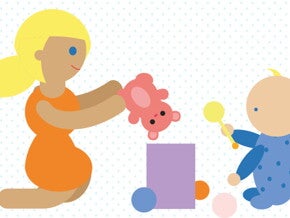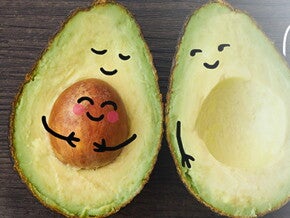
Acceptance and Refusal – 12 to 24 Months
Acceptance and Refusal – 12 to 24 Months
When feeding your baby, understanding how much food he/she needs can be tricky. With a little knowledge and observation, you will easily be able to identify when you have fed your child the appropriate amount of food.
While feeding your baby, understanding how much food he/she needs can be tricky. With a little knowledge and observation, you will easily be able to identify when you have fed your child the appropriate amount of food.
- Too much? Shakes her head or says “no”: Baby refuses to eat? There’s no point insisting… You should try to meet your child’s needs. If they are no longer hungry, don’t force them to eat more.
- Plays or throws her food: Baby throws food off the table? It’s time to stop the havoc! If your baby was hungry, they’d eat the food instead of playing with it.
- Gets distracted easily?: Baby seems in another world? Your baby is probably satisfied. According to their level of activity, the amount your baby eats at each meal may vary from one day to another.
- Covers her mouth with her hands: Baby refuses the spoon? They are probably satisfied. Note what your baby likes to eat and how much and when in a diary. These notes may prove to be useful for visits to the paediatrician.
- Too little? Points, reaches or asks for specific foods: Is your baby fascinated by their food? They may still be hungry. Let your baby eat with their fingers a little to practise independent feeding.
- Too little? Leads you to the fridge or kitchen: Baby wants to set the table? Your baby may still be peckish. It’s not surprising with all these new activities! You can give your baby some treats such as wholegrain rice puffs or a little piece of bread to practise chewing and independent feeding.
Related articles

How to Increase Baby Immunity with Child-Friendly Foods
Nothing is more painful than seeing your child fall prey to infectious diseases easily.
4 mins to read

The Importance of Eating Together – Family first!
Research has shown that shared family meals—no matter the size of your family—provide benefits for your baby beyond the joy of simply eating dinner together.
5 mins to read

Safe Food Preparation Principles
Follow these stay-safe principles when you’re shopping or preparing food for your baby.
4 mins to read

Vision
Curious about your baby’s vision? Your little one sees the world very differently than you do. Here is a guide to the general development of a baby's eyesight.
1 min to read

Baby names help
Need baby names inspiration? Here comes the fun bit! You may already have a favorite, or perhaps you’re waiting until you meet junior face-to-face.
2 mins to read

Activities for your 6-8-month-old
Playing with your baby is not only fun, it also helps him develop skills to build on for an active childhood.
4 mins to read

Benefits of a consistent bedtime routine
Did you know? The amount of sleep your toddler gets may be linked to his behavior, language development, and future weight.
3 mins to read

Easy 3 Step Guide To Introduce Solids
A month or so after introducing purees to your baby's diet, you can start experimenting with soft, lumpy foods.
3 mins to read

Baby food allergies Vs intolerances—things to consider
Baby allergies and intolerances can develop at any time. An allergy is our immune system’s reaction to a substance it thinks is harmful.
3 mins to read

How Often Should Baby Eat – A lot Actually!
Did you know? Your baby may need to eat three meals and two mini meals each day.
2 mins to read


How to help baby or infant reflux
Baby reflux. It’s one of the most common symptoms in babies in their first year. Here are some baby reflux remedies to help prevent and ease the symptoms.
2 mins to read

Baby Eating Patterns – How to instil Healthy, Early
Did you know? Your baby’s dietary patterns are set before his second birthday.
2 mins to read

Travelling With Baby
Going away with your baby gives you the opportunity to spend time with your family and enjoy their company. To make your trip a success, good preparation and organization are essential.
2 mins to read

Understanding why babies cry
Wondering why babies cry? If you’re struggling to understand what your baby is trying to tell you, check this list for possible clues to help.
1 min to read

Playtime ideas for your 6-month-old baby
There are plenty of fun activities you and your baby can do together to ensure that undesirable screen-watching habits never start.
3 mins to read

Congratulations on reaching 1000 days!
Did you know? By completing the First 1000 Days Nutrition Program, you’ve learned how to increase your toddler’s chances for healthy growth and development.
4 mins to read

Introducing & Starting Solids
Good nutrition will play an important role throughout your child's entire life so it is important to start them on the right track from the beginning and let it happen at a natural pace.
4 mins to read

How to relieve colic pain in infants
Babies cry. Some babies cry more than others. If your otherwise healthy baby is under five months old and has repeated bouts of uncontrollable crying, it could be colic.
2 mins to read